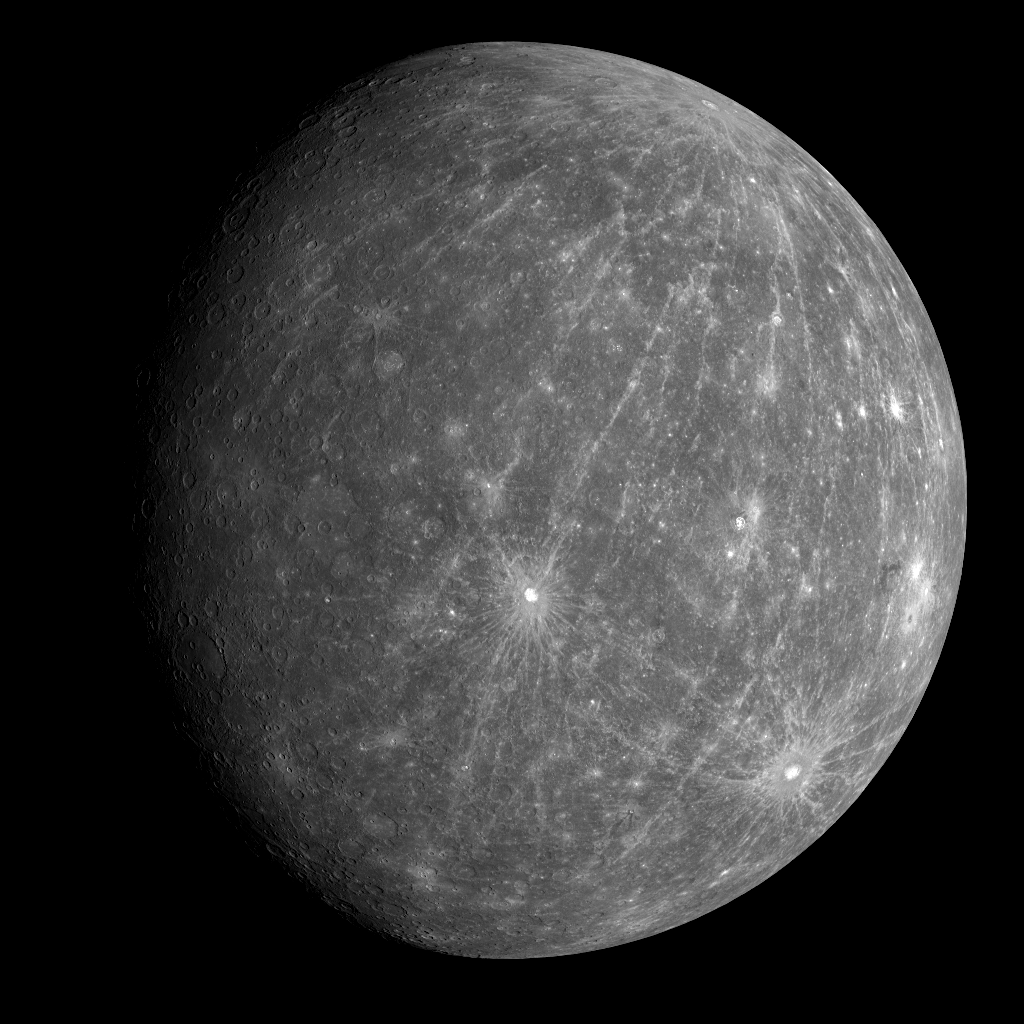[/caption]
Here's the first image from MESSENGER's flyby of Mercury on Monday. The bright crater just south of the center of the image is Kuiper, which has been seen before on images from the Mariner 10 mission in the 1970s. But most of this image, to the east, or right of Kuiper, toward the limb of Mercury is new territory for human eyes – at least in optical views. The image was taken by the Wide Angle Camera as MESSENGER was departing from the planet, and are among the first spacecraft views of that portion of Mercury's surface. Most striking are the large pattern of rays that extend from north to south, almost along the entire face of Mercury. Amazing! This extensive ray system appears to emanate from a relatively young crater newly imaged by MESSENGER, providing a view of the planet distinctly unique from that obtained during MESSENGER's first flyby.
2nd Update: (9:40 am CDT) More images!
Update: (8:50 am CDT) See 2nd image released below:
[caption id="attachment_19264" align="alignnone" width="580" caption="Mercury's limb. Credit: NASA/Johns Hopkins University Applied Physics Laboratory/Carnegie Institution of Washington"]
[/caption]
Above is the
3rd image
released from the second flyby, a spectacular close-up of Mercury, as seen by the MESSENGER as it approached the planet, at about 17,100 kilometers (10,600 miles) altitude. The features in the foreground, near the right side of the image, are close to the terminator, the line between the sunlit dayside and dark night side of the planet, so shadows are long and prominent. The MESSENGER team has only had a few hours to examine these intriguing features, and, currently, more images from the flyby are still streaming back to Earth.
[caption id="attachment_19260" align="alignnone" width="576" caption="Mercury close up. Credit: NASA/Johns Hopkins University Applied Physics Laboratory/Carnegie Institution of Washington "]
[/caption]
Here's the
second image
released from the flyby. This is a close-up image taken 9 minutes and 14 seconds after MESSENGER's closest approach to Mercury, when the spacecraft was moving at 6.1 kilometers/second (3.8 miles/second). The largest impact feature at the top of the image is about 133 kilometers (83 miles) in diameter and is named Polygnotus. This area was imaged previously by Mariner 10.
More on the first image:
Data from the flyby started coming back to Earth early this morning, at about 1:50 am EDT. This spectacular image is one of the first to be returned and was taken about 90 minutes after the spacecraft's closest approach to Mercury. This young, extensively rayed crater, along with the prominent rayed crater to the southeast of Kuiper, near the limb of the planet, were both seen in Earth-based radar images of Mercury but not previously imaged by spacecraft. As the MESSENGER team is busy examining this newly obtained view that is only a few hours old, data from the flyby continue to stream down to Earth, including higher resolution close-up images of this previously unseen terrain.
MESSENGER completed the flyby on Oct. 6 at 4:40 am EDT.
We'll add more images as they become available.
Source:
MESSENGER Gallery
 Universe Today
Universe Today
